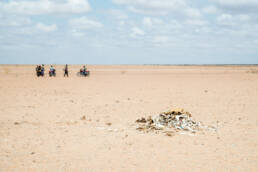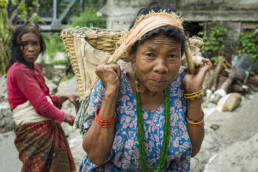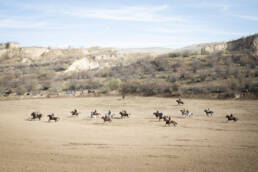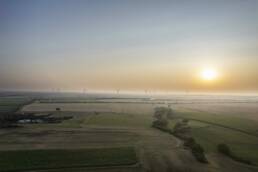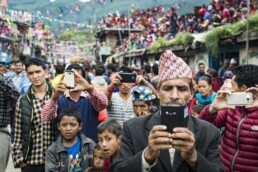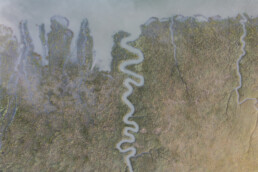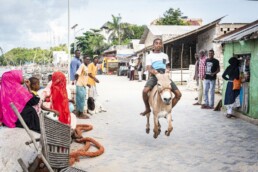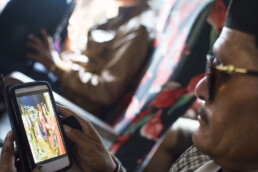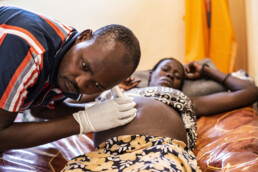Exploring the Intersection of Ethics and Video Production in Africa:
Exploring the Intersection of Ethics and Video Production in Africa: A Catalyst for Positive Change
In today's digital age, video production has emerged as a powerful medium for storytelling and communication. With the rise of NGOs (Non-Governmental Organizations) and the involvement of the United Nations, video production in Africa has taken on a significant role in raising awareness, fostering empathy, and driving positive change. However, ethical considerations are crucial to ensure responsible and impactful multimedia production. In this article, we delve into the world of multimedia production in Africa, highlighting the importance of ethics and the role of video in the work of NGOs and the United Nations.
The Power of Video in Promoting Sustainable Development in Africa:
Video has the potential to transcend cultural and language barriers, making it an effective tool for promoting sustainable development in Africa. NGOs and the United Nations leverage video production to shed light on critical issues such as poverty, healthcare, education, gender equality, and environmental conservation. By telling compelling stories through video, these organizations can engage global audiences, mobilize resources, and foster collaboration to drive positive change.
Ethical Considerations in Video Production:
Ethics plays a pivotal role in multimedia production, especially when it comes to representing diverse cultures and communities. Filmmakers and videographers working in Africa must prioritize authenticity, respect, and informed consent. It is essential to involve local communities in the storytelling process, ensuring that their voices are accurately portrayed and their perspectives are respected. Respecting privacy, maintaining dignity, and avoiding harmful stereotypes are crucial aspects that should guide the production of videos in Africa.
The Role of NGOs in Ethical Video Production:
NGOs operating in Africa recognize the importance of ethical video production. These organizations often work closely with local communities, fostering trust and building relationships. By involving community members in the video production process, NGOs can ensure that the final product is representative, respectful, and aligned with the community's aspirations. Collaborative approaches allow NGOs to empower local voices and create videos that genuinely reflect the realities on the ground.
United Nations and Video Production for Advocacy:
The United Nations actively employs video production as a means of advocating for various causes and initiatives in Africa. Whether it's raising awareness about human rights violations, advocating for peacekeeping efforts, or promoting sustainable development goals, the United Nations recognizes the power of video in conveying complex messages effectively. With an ethical framework in place, the United Nations uses video production to amplify voices, drive policy change, and inspire global action.
Empowering African Filmmakers and Content Creators:
Ethical video production also involves nurturing local talent and empowering African filmmakers and content creators. By supporting and mentoring emerging artists, organizations can enhance the representation of African stories and perspectives. This approach not only ensures authenticity but also enables a more nuanced understanding of the region's challenges and potential solutions. It is essential to invest in capacity-building initiatives that foster creativity, diversity, and ethical storytelling within Africa's multimedia production industry.
Conclusion:
Video production in Africa has the potential to be a catalyst for positive change when approached with ethics and responsibility. By leveraging the power of multimedia, NGOs and the United Nations can amplify voices, raise awareness, and drive action on critical issues affecting the continent. Embracing ethical considerations, involving local communities, and empowering African filmmakers are essential steps in ensuring that video production contributes to sustainable development and a more inclusive representation of Africa's narratives. Through these efforts, multimedia production can create a lasting impact that transcends borders and inspires a global audience to support Africa's journey towards a brighter future.
Projects in 2023
2022, and what to expect in 2023.
"In 2022, I felt helpless. It felt like the world is going down. It made me think the way of communication should be sharper. We need, as humanity, a radical change. As a communication specialist, I need to be sure that messages on global issues can be delivered with more strength, generating more impact.
Last year, I had the opportunity to document the militarization of the public space in Russia, as well as the movement against the “Mega Bassines” - the water grabbing by the agribusiness in my home region in France, which might lead, in a short term, to water scarcity. It was distressing.
But also, I could witness bright solutions and meet people with great ideas. I got to document an agriculture program which uses radio as an extension tool (for Radio Farm International) or the UNFPA efforts to end FGM in Africa, with great impact on the local communities.
I am now based in Tajikistan, a country severely hit by climate change among other challenges. In difficult times, I believe communication can really help in the radical change we all need to fight structural inequalities, climate change and other risks to our world.
Showing the reality on the ground, and delivering messages to the community and the decision-makers have to be prioritised to build transparency between all actors of change.
In 2023, I am aiming to assist great projects to be more visible, and to inspire others. I am to share my experience through workshops and training packages, that can equip people in the field to communicate on challenges and advocate their work.
It is the only way to address the issue of climate change in the multimedia production sector, by reducing the carbon footprint of multimedia creation.
New photographic website here"
Lambert Coleman
How to create more inclusive multimedia content ?
“A society for all” – this is the definition of an inclusive society given at the World Summit for Social Development in Copenhagen in 1995. The notion of inclusivity, in the field of multimedia production, refers to the promotion of content that highlights the diversity of society.
Generally speaking, multimedia content shapes the public’s representation of certain categories of the population. Within the framework of NGOs and other development actors, multimedia content builds the representation of certain regions, which receive little media coverage. These regions are sometimes practically accessible only to humanitarian actors.
However, in the field of humanitarian action, NGOs have been widely criticized for creating miserable and decontextualized content with the aim of fundraising or awkwardly raising awareness of certain situations. This had the consequence of distorting the reality on the ground and creating or perpetuating a superficial vision of certain regions of the world.
There are simple principles to create more inclusive content:
- Diversify the people involved in the photo and video content. During the pre-production phase, when selecting the characters, it is important to show the diversity of the program through heterogeneous profiles (gender, age, religion, social background).
- Being inclusive means putting forward people with disabilities or people from minorities, in order to make them visible.
- It is important to have an anthropological approach to be more inclusive. Thus, it is important to take the time to understand the program that is documented and to identify all the stakeholders, to choose the people who best embody the content, and who best promote inclusive values.
For the two first points, it is also important to show the diversity of the roles that the characters occupy in the project and not to associate a category with a predefined role.
Thus, it is important that the actors of change and the beneficiaries are not uniform. In the specific context of success stories, it is interesting to give voice to local staff, actors of change. Thus, to show the sustainability of the program. It is also important to show the diversity of beneficiaries, and this, in order to break the clichés.
20 January 2023
Projects in 2023
21 October 2022
CONDITIONS GÉNÉRALES DE VENTE PRODUCTION VIDÉO
26 October 2021
Comment créer des contenus multimédias plus inclusifs ?
26 October 2021
How to create more inclusive multimedia content ?
12 October 2021
Renforcement de capacités en storytelling.
How to conciliate respect of the environment and multimedia production?
Respect for the environment is one of the major challenges of this century. Each month, new studies highlight the fragility of our planet, and the impact of the overproduction of resources on our ecosystems.
All sectors are already reinventing themselves in order to offer alternative models, with the aim of creating while respecting the environment.
In the multimedia production sector, here is an outline of these new practices:
- Reduce travel that emits carbon energy, such as airplanes, etc. The production of multimedia content can involve a lot of travel. In order to limit your carbon footprint, it is possible to approach local service providers, so that they can carry out the shooting.
- To reduce your carbon footprint, it is also possible to specialize in a limited geographical area, close to your place of residence, in order to limit travel.
- Reducing your impact on the environment also means making wise use of your professional equipment, maintaining and preserving it well, and using it for long cycles.
- Become aware of the physical pollution of digital data. Retaining Terabytes of data comes at an environmental cost, since it requires either the acquisition of hard drives and backups, or space in the cloud.
- More practically, reducing its impact on the environment means reducing its use of single-use products, and leaving no waste, in places where recycling is not optimal. We can cite Rwanda, a pioneer in Africa in the ban on plastic bags, which has been followed by other countries, such as Kenya. The latter set an example. Although radical, this measure helped preserve the visual appearance of urban and rural areas, where plastic bags landed.
Two simple ideas to offset its impact on the environment:
- Finally, since it is impossible to have a neutral impact on the environment, it is still possible to donate part of its profits to projects that fight for the respect of the environment (independent environmental NGO)
- It is also possible to offer services at reduced prices for projects with high environmental value, in order to enhance their programs.
An example of drone video production about the impact of climate change on environement:
20 January 2023
Projects in 2023
21 October 2022
CONDITIONS GÉNÉRALES DE VENTE PRODUCTION VIDÉO
26 October 2021
Comment créer des contenus multimédias plus inclusifs ?
26 October 2021
How to create more inclusive multimedia content ?
12 October 2021
Renforcement de capacités en storytelling.
Capacity building training in storytelling.
Transborder communication proposes capacity building workshops in success-photo stories and video storytelling, either in-person or online, in French or English.
For whom?
This training is tailored for the development sector and humanitarian actors. The advanced training is shaped for field-staff and communication teams who want to enhance their storytelling skills.
During the training, they will develop a story ready to publish. Also, they will learn other important aspects of storytelling, such as how to conduct interviews with beneficiaries, edit and classify data, etc.
Methodology: Learn by doing in 3 steps.
This workshop will be using a “Learn by doing” methodology. After learning the basics of storytelling, the participants will be working on their own stories. They will be given feedback all along the creation process. In the end, the story will be ready to be published.
Step 1: Learn – introduction to storytelling.
During this workshop, the participants will be given the keys to powerful storytelling.
- The workshop will teach storytelling basics through various modules, such as “introduction to the four steps of storytelling” or the “How to choose a great protagonist”.
- The workshop will also focus on some technical aspects, such as an introduction to photo editing, filling metadata, and writing a good caption.
- During the workshop, some modules will introduce the participants to ethics concerns related to gathering stories in the field, such as the GDPR or the importance of collecting a consent form.
- The workshop will aim at creating an enabling environment for discussing and exchanging tips and feedback.
At the end of the workshop, each participant receives a trainee kit, including the presentation, the methodology, guidelines for the assignment.
Step 2: Do – photo or video assignment.
Then, each participant is asked to collect a story in the field. During the entire story collection process, participants will have the opportunity to exchange with the trainer and the rest of the team about their progress or challenges facing the field.
The task will be adapted to the organization needs in terms of communication content, such as:
- Create a photo story: 150-word stories + 10 to 15 captioned photos + consent forms.
- Create a one-minute video for social networks containing two interviews + stabilized shots + good audio + consent forms.
Step 3: Present – a review of the field assignment.
Finally, each participant will present their story to the team. It will be a perfect moment to discuss the challenges faced in the field and the lessons learned.
After each presentation, the trainer will provide feedback leading to a debate with the rest of the participants.
At the end of the workshop, the participants will have a story ready to be disseminated.
At the end of the training, the participants will improve their photo/video technical skills and can create multimedia content independently.
The trainer:
Lambert Coleman is a French multimedia producer. He has worked for NGO and United Nations organizations in more than fifteen countries across Africa and Asia. He produced photo stories and videos and documented programs for donors and broader audiences.
20 January 2023
Projects in 2023
21 October 2022
CONDITIONS GÉNÉRALES DE VENTE PRODUCTION VIDÉO
26 October 2021
Comment créer des contenus multimédias plus inclusifs ?
26 October 2021
How to create more inclusive multimedia content ?
12 October 2021
Renforcement de capacités en storytelling.
Drone photography and videography for strong storytelling.
Since the beginning of the last decade, drones are more and more used in multimedia production, for videos but also for creating great photo-projects.
It brings unique aerial views, which were possible before, only by filming from helicopters, planes, or air-balloon.
Nowadays, many drones can be found on the market. Some drones weighing less than 800 grammes (DJI air2S for example) are capable of filming in 5,6K and shooting very high-quality pictures in RAW.
But, what can drones bring to photo or video storytelling?
- First of all, drone shots are incredible to give an understanding of where the action takes place. It gives a great understanding of the environment, etc. Let’s say if you are filming in a remote village in Africa, it will be very informative to start a video with a long drone shot introducing the village. It will give a good understanding of the territory and the surroundings.
- Secondly, drones can also be used to demonstrate the impacts/outcomes of a project. If you shoot a programme which consisted in developing agriculture, you might as well use a drone shot to show the results of the programme. In fact, when shooting with a drone, it is always important to play with geometrical forms and to follow lines, circles, etc, and in that way, drones are very suitable to shoot agriculture programs.
- Thirdly, drones are great for a nice conclusion shot, using basic effects, such as Pull-Away Shot (the drone move back and up), and can be used to pull out from the scene.
To conclude, drones are a great tool to diversify the shots (on top of wide angles, close-ups, dynamic shots) for video and photo projects. They are probably the main revolution brought to multimedia production during the last decade. It gives the possibility to low/medium range production to afford aerial shots.
Below, an example of a video story shot with a drone.
20 January 2023
Projects in 2023
21 October 2022
CONDITIONS GÉNÉRALES DE VENTE PRODUCTION VIDÉO
26 October 2021
Comment créer des contenus multimédias plus inclusifs ?
26 October 2021
How to create more inclusive multimedia content ?
12 October 2021
Renforcement de capacités en storytelling.
The four steps to a strong storytelling.
When working for NGOs or United-Nations organizations, we are often asked to produce strong storytelling content to document a project, which should be addressed in four steps.
Storytelling is a great methodology to communicate the main achievements of a project. Most of the time, a first-person narrative video gives more strength to a story. It places the beneficiary at the centre of the achievements of the program (photos, videos, audio records, etc).
Once you have identified your protagonist, a good storytelling relies on four steps:
• The issue: what issues the protagonist faces, which explains your intervention;
• The solution: what solution your organization implemented to solve the issue of your protagonist;
• The challenges: what was the challenges your organizations faced in implementing the solutions;
• The impact(s): what was/were the concrete impact(s) on the protagonist and its community daily life.
Additional elements can also be added to your story, such as a deeper description of the environment in the introduction. You can also focus on the lessons learnt in the conclusion.
Ideally, the story should focus on other strong visual aspects related to the daily life of the protagonist. As an example, the main protagonist can be followed at work, at home, gathering with friends and with family, etc. These additional elements will create proximity with the character, and it’s exactly what you want to reach through story-telling.
Below is a great example of storytelling with Rosemary’story.
Why the Uberisation of the multimedia production services is not a threat.
Like any other service providers, the multimedia production sector is experiencing important mutations with the arrivals of new actors. Some companies aim to become the new Uber, by standardizing the production process and eventually, to become essential in the relation between story-tellers and their clients.
In the French photo industry, Meero has clearly shared his views in becoming the main platform which would link clients to photographers. It has been criticized by profession, for creating an unnecessary dependency to an actor driven by its own interest.
- Contrary to many other services, multimedia production service cannot be over-simplified, as it usually consists of multi-layers complex projects.
- Unlike food delivery, multimedia production implies flexibility in the offer, as every client’s projects are different.
- Every shooting is different. Each project has its own constraints, which are identified and rectified all along the production process.
- Every story is different. We put the human at the centre of our work. We focus mainly on projects with high social and environmental impacts.
- Every client is different. We need time to establish trust with our clients as well as with the people we interview.
At the end of the day, our clients work with us as we are driven by putting the human in the centre of our collaboration.
- We carefully listen to their needs when it comes to writing the script of a story.
- We are trained and careful when it comes to working in a volatile context (in the most remote parts of Africa).
- We work with highly skilled experts, aware of the challenges they could face on the field.
- We are efficient when it comes to the final stage of editing and flexible when it comes to making a final touch up.
- We are adaptable when it comes to fit your budget.
- We work hard on creating global satisfaction all along the production process.
- We work to give value to your projects.
Lambert – Founder of Transborder Communication
Challenges and opportunities for producing multimedia contents in post-COVID context.
The year 2020 has been unpredictable, with dramatic impacts on every sector of the economy, both at a global and local level. Having been based in Nairobi for two years, I considered as normal to travel all over East-Africa to document projects, and to create innovative multimedia contents.
However, even before COVID-19, new tendencies were perceivable in the multimedia production industry, involving less and less travel, thus for three reasons:
1) An environmental reason: any travels, mostly by planes, have an environmental impact. A collective effort can be perceived, mostly among the young generation, to reduce our carbon footprint, and therefore it is obvious that multimedia production industry needs to reconsider its travel frequency.
2) A social reason: Talented photographers, videographers and local multimedia production companies can be found in any country. Nowadays, with affordable digital equipment available worldwide and access to online knowledge platform, it has never been that easy to find great partners with whom to collaborate. African visual storytellers are often the most suitable to tell the story, which makes the difference. When it comes to doing a shooting abroad, why not giving a chance to local crew, rather than flying over some replaceable technicians?
3) An economic reason: By outsourcing the shooting to local photographers, videographers, and multimedia production companies, it reduces the production and logistic costs and makes the offer more competitive for the clients.
By focusing on pre-production and editing/post-production, it also removes the travelling part, which can be the most tiring part of an assignment.
As visual storytellers, we obviously want to shoot photos, videos and to interview the characters of our stories. By reducing our travels, we can also be more efficient in the pre-prod and post-prod and focus more on our own personal projects at a local level.
Lambert – Founder of Transborder Communication
